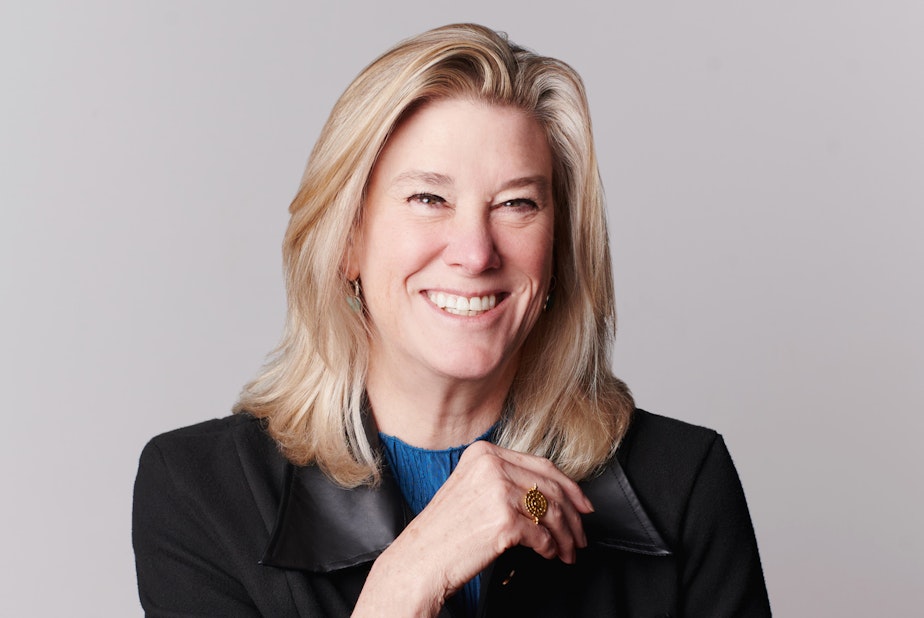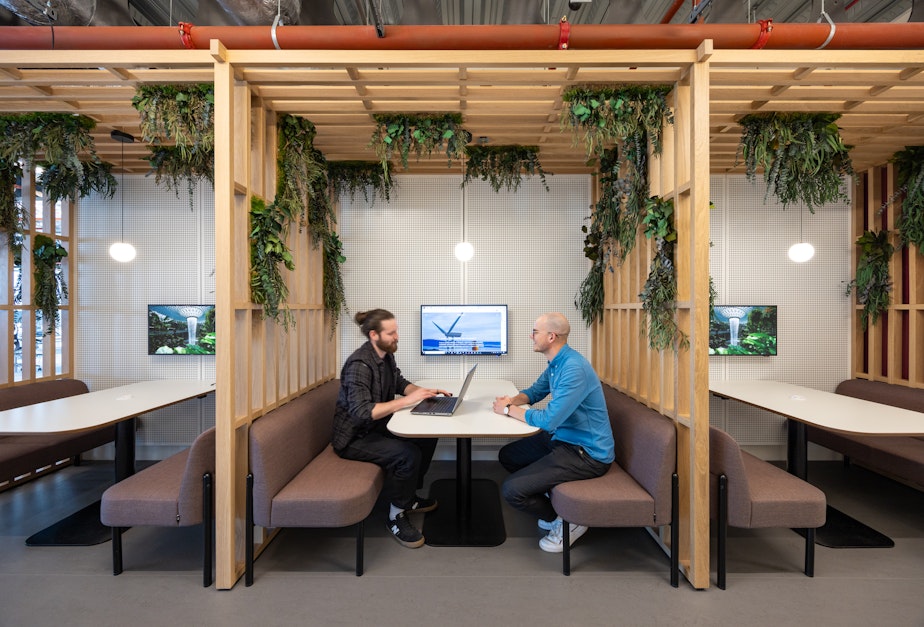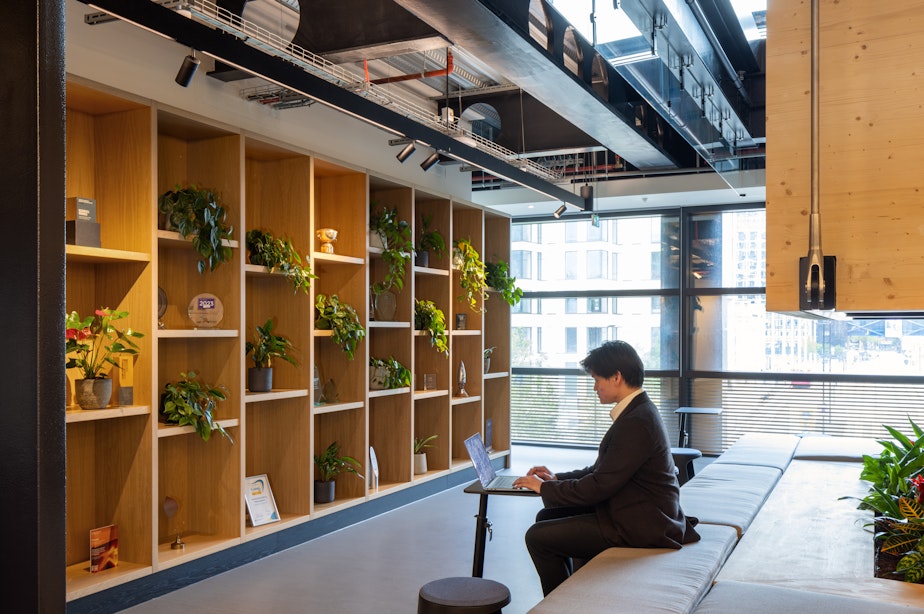Designed with every mind in mind. Seattle firm transforms office spaces for neurodiversity

Eight years ago, a client asked Kay Sargent, the director of thought leadership for interiors at global design firm HOK, “How do you design space for someone who has ADHD?”
As the mother of five children, two of whom have been diagnosed as neurodivergent, Sargent thought she should have had a better answer for that question. So, she and her team at HOK started doing some research.
“What we found was just this huge gap in information about how to design a built environment to really support people with cognitive challenges and sensory-processing issues,” she said.
One in five people experience some type of condition related to neurodivergent brain functioning. Those conditions range from autism and attention-deficit disorders to dyslexia and dyspraxia.
Sponsored
That means “normal” distractions in the office — loud conversations, background music, construction noise, street sounds, even an abundance of visual displays or clutter — could prevent 20% of workers from being productive.

“What we’ve really come to realize is every single one of us is processing information differently,” she said. “We are all neurodiverse. We just aren’t all neurodivergent.”
In terms of workplace design, Sargent said offices should be open, but have a variety of environments to accommodate people who have different needs, or whose needs change over the course of a workday.
For example, when it comes to acoustics, some people are hypersensitive to sound, while others need some background noise or even the energy of others to think and work effectively. An ideal work environment would allow people to have access to busy, buzzy settings, as well as quieter spaces.
Sponsored
“Our challenge is to create environments that have a balance of different types of sounds that would be appropriate for the task at hand and make it so people can navigate to that right space for what they’re doing,” Sargent said. “What you might need to thrive could drive me absolutely crazy.”
Sargent said the default office design over the last 40 years has oversimplified the needs of workers so the average space doesn’t work for most people.
“We’ve oversimplified workplaces to a point that one size now misfits all,” she said.
Designing workspaces to accommodate people who process information differently has taken on an added urgency as more workers are being asked to return to the office, after years of working from home during the pandemic.
In January, Amazon called for employees to return to the office five days a week. Starbucks is increasing its in-office requirement from three days a week to four for corporate workers starting in October.
Sponsored
RELATED: Could Amazon’s return-to-office policy be driving up rent?
Sargent and her team at HOK have spent the last eight years studying how office spaces can be designed to be more neuro-inclusive, and they’re sharing their findings with design firms around the the world.
They redesigned HOK’s downtown Seattle office to see how their own employees would respond, and conducted surveys, interviews, workshops, and research initiatives to come up with small and large changes that can help neurodivergent workers feel comfortable and stay on task.
Changes included reducing clutter, allowing for changes in lighting, making certain areas quiet spaces, and having different designated zones for different modes of work.

After the changes, workers reported a 38% increase in their ability to manage acoustics, a 24% increase in their ability to come up with ideas and be creative, and a 16% increase in their overall productivity.
“People moved more, felt healthier, more engaged, more in control, less distracted,” Sargent said.
This spring, Sargent published a book based on those findings: “Designing Neuroinclusive Workplaces: Advancing Sensory Processing and Cognitive Well-Being in the Built Environment.”

When it comes to office design, she said paying attention to the needs of neurodivergent workers ends up helping everyone in the workplace.
Sponsored
“People who are neurodivergent are the canary in the coalmine,” Sargent said. “They’re going to identify something first and maybe more acutely, but it doesn’t mean it’s not impacting every single other person in that space.”
She said design changes apply not only to offices, but to other structures where people go to play, learn, and spend time.
“Our world is so chaotic, for all of us,” Sargent said. “Anything we can do to help reduce the stress, to help us be able to process and function more holistically in those environments in a positive impact for every single one of us.”
This story was prepared for the web by Stephen Howie.




